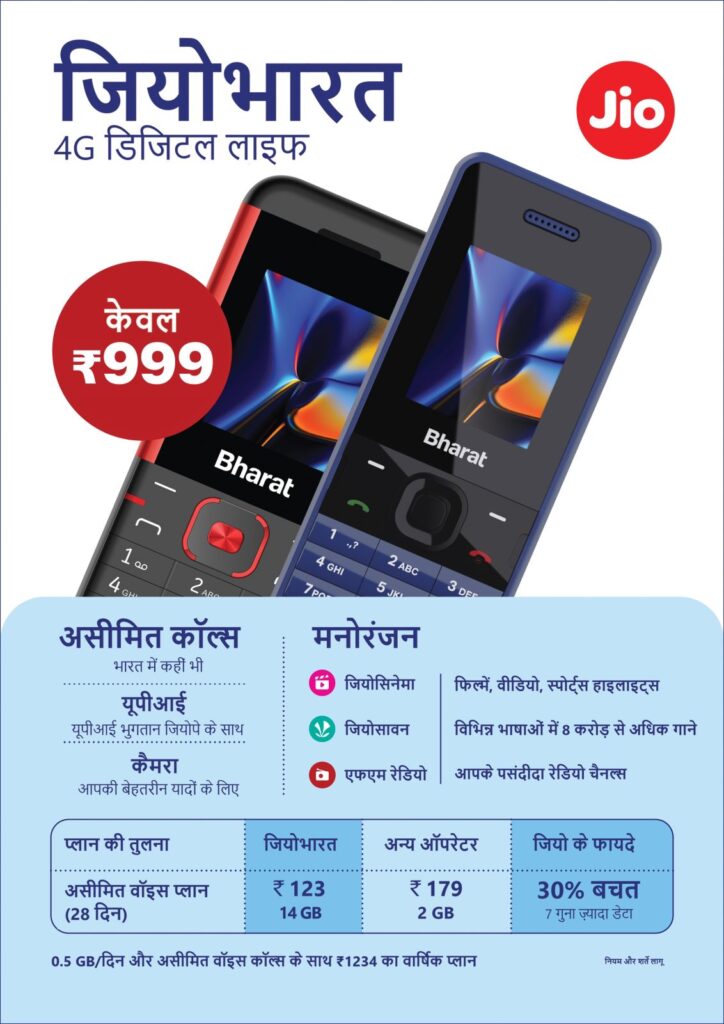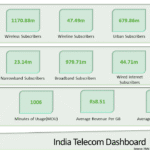Ever since Jio itched its presence on the Indian telecom landscape, we have only witnessed disruptions. These disruptions have proven beneficial for the citizens of the country across segments and socio-economic profiles. An urban uberfic consumer was able to notch up the lifestyle powered by technology, a rural aspirational consumer was able to join the digital bandwagon, and on the economy side, it triggered several disruptive business models opening up new avenues of employment like app-led economy and aggregator businesses. The governance also saw its impact where Digital India initiative could expand its feet beyond elites.
As a business entity Jio has achieved several milestones in this short span of time. For instance, as per the latest TRAI report, it has 51.93% market share for broadband (wired + wireless) services as on 30th April, 2023. Similarly, in wireline business, which had almost stagnated, Jio has a leader position with 32.05% market share for the same period. In the hypercompetitive wireless segment, its market share was 37.90% leading the operator table. The point to note is that Reliance Jio has through its execution become the leader in almost all major segments of the telecommunications in India. As a business entity it has a lot to rejoice.
But it doesn’t stop here. Ever since Jio was operational it has been thinking of all the segments – urban and rural, premium and affordable, metro and non-metro. In its true form, Jio set up networks across the country with homogeneous experience and the same SLA is being maintained across the cities and towns it operates. For instance, the services I see of Jio in Gurugram and Delhi-NCR are just comparable to what it offers across various towns of Kashmir, J&K. That’s real decentralisation and democratisation of digital services.
In this stride, Jio is the only operator which has always been taking devices along as an integral part of the ecosystem realising that without a proper device strategy, its networks and NOCs will fall flat. It started with JioPhone, then with JioPhone Next and now at a time when the mobile handset industry is cattle-herding towards premiumisation, Jio introduces Jio Bharat. If again Jio would have taken a pure business and data driven decision, perhaps launching a Jio Bharat phone might not have been a recommendation of business strategists. The advisors and pundits would have recommended Jio to focus on greener pastures and further consolidate on its market leadership including the segments it maintains a lead.
But the behemoth is determined to be a change agent and result in a holistic all-inclusive digital revolution in the country. Yes, it’s true that there is ambition of having 500 million plus subscribers on Jio. But, at a time when we all realise that due to saturation, its better to focus on value than volumes across the telecom industry right now, Jio is not letting it easily. JioPhone and JioPhone Next were perhaps not able to make a due impact owing to various factors like lack of widespread 4G network and availability of better alternatives respectively. But today times have changed. 4G is a country wide and stable network. Today, even in the remotest part of the country, Jio network is live.


By launching Jio Bharat phone for just ₹999, along with 30% cheaper monthly plan compared to other operators, Jio has made a strong proposition to the 2G featurephone base of 250 million subscribers in the country. The phone with almost same price as many existing feature phones will not add initial ownership burden for the consumers. This was among key hindrances of switching or upgrading to a digitally enabled phone, a smartphone, where a user would have to spend 5-6 times more to own one.
With the set of applications that Jio has burnt with Jio Bharat, it addresses all key requirements of the user segment. They can make digital payments, listen to their FM radio, listen on demand music, and also get some access to OTT video content. Apart from communication, a consumer can join digital payments and entertainment.
It looks that Jio has finally cracked the code and we will finally see the digital phone user base increasing in India if not the smartphone. This is the only way to achieve 2G Mukt Bharat, where we need to have a Bharat Phone along with Bharat Sanchar. Perhaps something, that BSNL needs to ponder which gets its 3rd infusion of revival capital since 2019.





